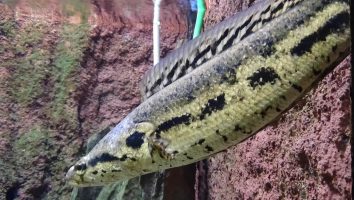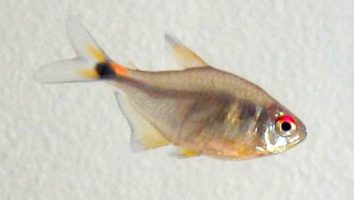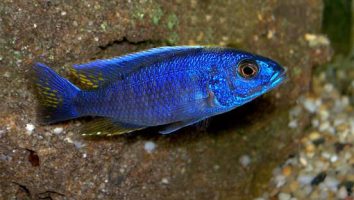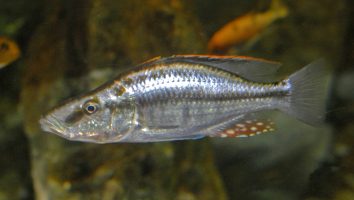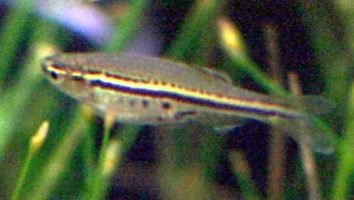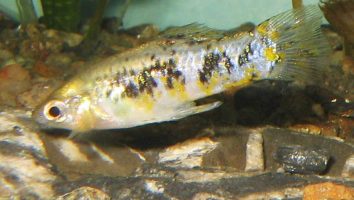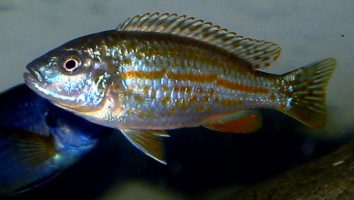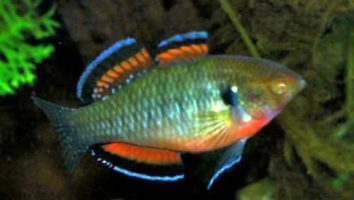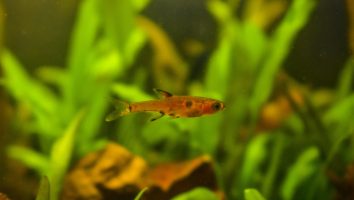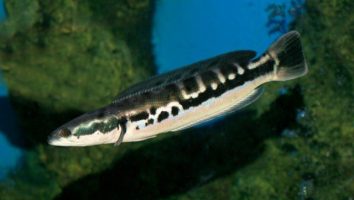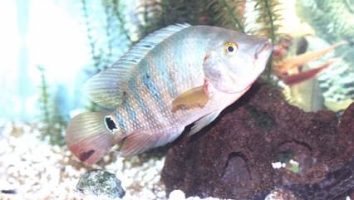The three-lined pencilfish is a freshwater fish that is native to South America. This fish is a member of the characin family and is closely related to the neon tetra.
The three-lined pencilfish is a small fish that only grows to be about 2 inches in length. This fish is silver in color with three black stripes running vertically down the length of its body.
The three-lined pencilfish is a peaceful fish that does well in a community tank. This fish is not aggressive and gets along well with other fish that are similar in size.
The three-lined pencilfish is an easy fish to care for and is a good choice for beginner fishkeepers.
Table of contents
Species overview
Three-lined pencilfish (Nannostomus trifasciatus) are a freshwater fish that is found throughout much of South America. The heaviest populations are in the Amazon and Orinoco river basins, but they can also be found in the Paraná river basin as well.
They prefer slow-moving waters with a lot of vegetation and hiding places. This is something to keep in mind when setting up their aquarium as they will feel much more comfortable with a lot of plants and hiding spots.
The three-lined pencilfish is a very peaceful fish that is compatible with a wide variety of tank mates. They are not known to be aggressive at all and will often shoal with other fish of their own species.
The main draw of the three-lined pencilfish is their unique stripes. These fish are very slender and have three horizontal lines running the length of their body. This makes them stand out in any aquarium and is sure to catch the eye of anyone who sees them.
Appearance

Three-lined pencilfish are easily recognizable by the three black lines that run vertically down their bodies. The middle line starts right behind the head and extends to the base of the tail.
The other two lines start at the base of the pectoral fins and end just before the anal fin. In between these lines, you’ll find a series of small black dots.
The body shape of these fish is long, thin, and slightly curved. This gives them a unique look and makes them stand out in a crowd.
Their dorsal and anal fins are both moderately sized and begin about two-thirds of the way back on the body. Both fins are slightly rounded at the edges.
The caudal fin is forked and about the same size as the dorsal and anal fins.
The pectoral fins are small and thin.
These fish have small eyes that are set relatively far back on their heads.
Lifespan
Three-lined pencilfish have a lifespan of 3-5 years.
As with most fish, their lifespan can be impacted by a number of factors. Poor water quality, stress from bad tank mates, or a suboptimal diet can all lead to a shortened lifespan.
Size
Three-lined pencilfish only grow to be about 2 inches in length.
Tank
Tank Size
The minimum tank size for three-lined pencilfish is 30 gallons. If you want to keep a school of them, you should add an additional 10 gallons of space for each fish.
Water Parameters
The three-lined pencilfish is a freshwater tropical fish that is found in the rivers and streams of South America.
They prefer slow-moving water with plenty of vegetation.
The three-lined pencilfish is a relatively small fish, only reaching about 2 inches in length.
Their natural diet consists of small insects and larvae.
In the aquarium, they should be fed a diet of small live or frozen foods.
Here are a few basic water parameters to help create a healthy environment for three-lined pencilfish.
- Water temperature: 75 to 82 degrees Fahrenheit
- pH levels: 6.5 to 7.5
- Water hardness: 2 to 12 dGH
- Alkalinity Levels: 4-8 dKH
What To Put In Their Tank
Three-lined pencilfish are a freshwater species that’s native to South America.
In the wild, these fish can be found in slow-moving streams and rivers. They’re not a species that’s known for being very active, so a tank that’s on the smaller side will be just fine.
Something to keep in mind is that these fish come from an environment with a lot of vegetation. When setting up their tank, you should try to replicate this as best as possible.
You can do this by including some plants (real or fake) and driftwood. The driftwood will provide a hiding place for your fish and the plants will give them something to graze on throughout the day.
The substrate in their tank can be either sand or gravel. We recommend sand since it’s softer and won’t hurt their delicate fins.
Common Diseases
The three-lined pencilfish is a relatively hardy fish, but that doesn’t mean they can’t get sick.
Just like any other fish, they are susceptible to a number of diseases and parasites. The most common of these is ich, which is a parasite that can cause a lot of problems for your fish if it’s not treated properly.
Other common diseases include bacterial infections, fungal infections, and parasites.
The best way to prevent your three-lined pencilfish from getting sick is to maintain a clean and stable environment in their tank. This will keep them healthy and reduce the chances of them getting sick.
If you do notice that your fish are sick, the best thing to do is to consult a vet or fish expert so you can get them the proper treatment.
Behavior & Temperament
The three-lined pencilfish is a peaceful, schooling fish that is relatively easy to care for. These fish are native to South America and can be found in slow-moving rivers and streams.
In the wild, these fish school together in groups of 10 or more. So, it’s best to keep them in groups in your aquarium as well. If you don’t, they may become stressed and their health will suffer as a result.
When it comes to temperament, the three-lined pencilfish is a peaceful fish that gets along with most other fish. The only exception is if you put them with fish that are too large. These fish may see the larger fish as predators and become stressed.
Other than that, these fish are relatively easy to care for and make a great addition to most aquariums.
Tank Mates
Three-lined pencilfish are small, peaceful, and timid. They do best in a tank with other small, peaceful, and timid fish.
Tank mates that are too large or aggressive will stress them out and make them more susceptible to disease.
Some good three-lined pencilfish tank mates include:
- Neon Tetras
- Ghost Shrimp
- Guppies
- Platies
- Mollies
- Swordtails
- Endler’s Livebearers
Breeding
Three-lined pencilfish are another species that’s easy to breed in captivity. All you need is a single male and female, and you can let them take care of the rest.
First, start by setting up a breeding tank. It should hold at least 10 gallons of water. The water should be soft and acidic, with a temperature between 74 and 80 degrees Fahrenheit.
Then, add a layer of peat moss to the bottom of the tank. This will help to recreate the natural environment that these fish are used to.
When ready, add a male and a female to the tank. The female will lay her eggs on the peat moss, and the male will fertilize them.
After about a week, the eggs will hatch. The fry will be very small, so you’ll need to feed them live foods. Baby brine shrimp or microworms are a good option.
As they grow, you can start to add other foods to their diet. Flakes and pellets are usually fine. Just make sure that the food is small enough for them to eat.
Conclusion
The Three-lined Pencilfish is a beautiful and unique fish that is perfect for the intermediate aquarist.
They are relatively easy to care for but do require a bit more attention than some of the other fish on this list.
However, we think they are definitely worth the effort and would make a great addition to any community tank.
If you’re looking for a fish that is a little bit different and will stand out in your tank, the Three-lined Pencilfish is a great option!

